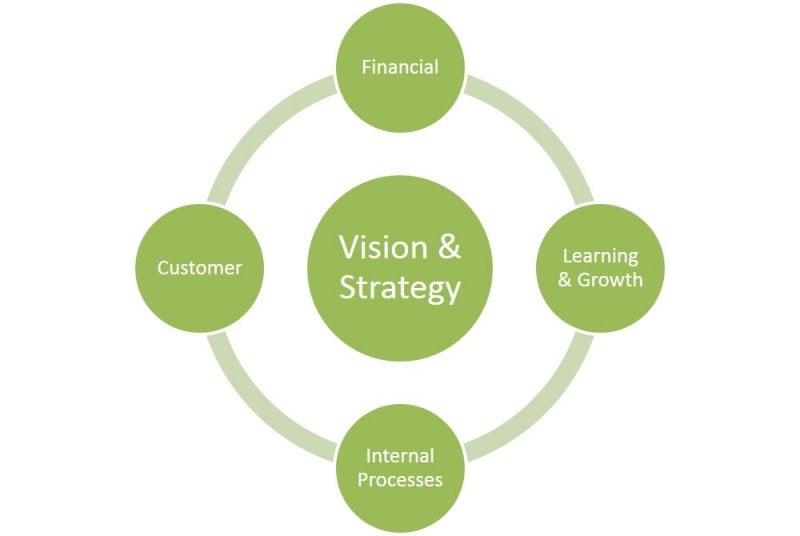
The balanced scorecard perspectives
The scorecard and the prism
Mahmood Reza recommends two performance management models that offer arts organisations a means of measuring areas that are of genuine importance to them.
In my last article I looked at the importance of performance management and measuring areas of the business that can actually be managed. Here I look at two performance management models which I think are particularly relevant to the arts sector: the balance scorecard and the performance prism.
The organisation considers what its stakeholders need and want from the organisation, and consequently what the organisation needs and wants from its stakeholders
The balanced scorecard was developed by Kaplan and Norton as an attempt to counter a rather narrow-minded approach to performance management that relied too heavily on financial measures. Its approach relies on the organisation defining key dimensions of performance for which discreet yet linked measures can be reported. The four categories or ‘perspectives’ are:
- Customers: Identifying who the target customers are and what is the value proposition in serving them. Example measures could include returning customers, average spend per customer and customer satisfaction surveys.
- Internal processes: These are the key processes which we must excel at to continue to add value for customers so that we can provide what they want and need. Example measures could include the number of projects completed on time and number of projects completed within budget.
- Innovation and learning (or learning and growth): There is normally a gap between the current infrastructure of employee skills, information systems and organisational culture and the level necessary to achieve the desired results. The measures such as employee satisfaction, training, internal rewards and recognition should help close the gap. Example measures would include staff retention, staff absenteeism and the number of new shows.
- Financial: The measures tell us whether our strategy execution and implementation, detailed through measures in the other perspectives, leads to improved bottom-line results. Typical measures would include cashflows, growth in earned income and cost efficiencies.
These measures represent a communication tool to employees and external stakeholders, and are the outcomes and performance drivers by which the organisation should achieve its mission and strategic objectives. A framework for the four perspectives helps describe the key elements of strategy and the framework is made up of objectives, measures, targets and initiatives.
The performance prism was devised by Cranfield University and is a model that considers all organisational stakeholders, without necessarily focusing on one single group. The organisation considers what its stakeholders need and want from the organisation, and consequently what the organisation needs and wants from its stakeholders. This stakeholder-driven model is a good fit for arts organisations.
There are five facets to the performance prism:
- stakeholder satisfaction
- stakeholder contribution
- strategies
- processes
- capabilities.
The performance prism is distinct from other models in a number of ways. First, it is stakeholder-driven and not strategy-driven. Second, the concept of stakeholders is more inclusive and does not just consider shareholders. Third, customer success is seen as based on ‘successful’ partnerships and inter-relationships between the organisation and stakeholders. And fourth, measures can be generated and used for all levels within an organisation
When designing the prism, the five facets prompt specific questions (and answers):
- Stakeholder satisfaction: Who are the key stakeholders and what do they want and need?
- Strategies: What strategies do we need to put in place to satisfy the wants and needs of the key stakeholders?
- Processes: What critical processes do we need to put in place to enable us to execute our strategies?
- Capabilities: What capabilities do we need to put in place to allow us to operate, maintain and enhance our processes?
- Stakeholder contribution: What contributions do we want and need from our stakeholders if we are to maintain and develop these capabilities?
These two models have aspects in common such as using a broad range of financial and non-financial key performance indicators, linking measures to objectives and what is important to an organisation, not just focusing on the financial measures. My preferred choice is the performance prism because it is stakeholder-driven and reflects the range and diversity of stakeholders that arts organisations work with. The important thing to remember is that an arts organisation needs to be able to answer the question of how it is doing objectively, and then manage what it measures.
Mahmood Reza is the owner/manager of Pro Active Resolutions.
www.proactiveresolutions.com
Join the Discussion
You must be logged in to post a comment.